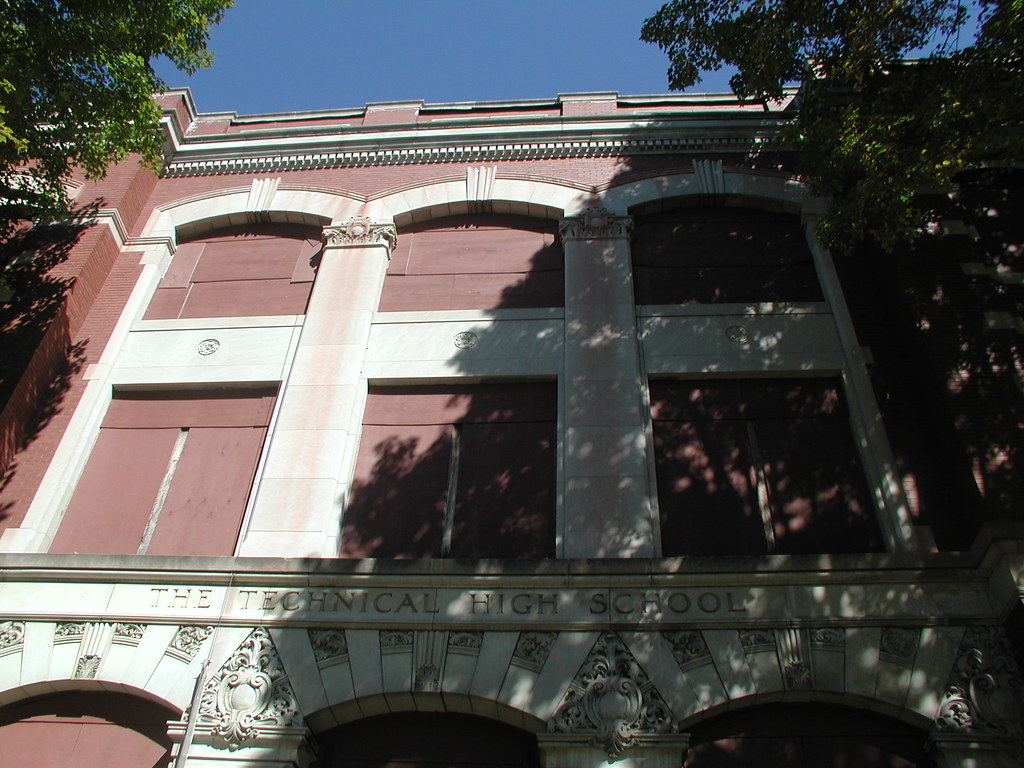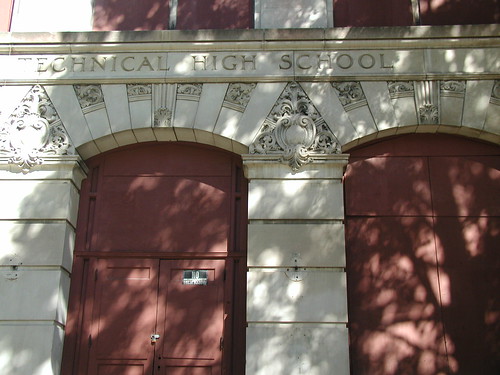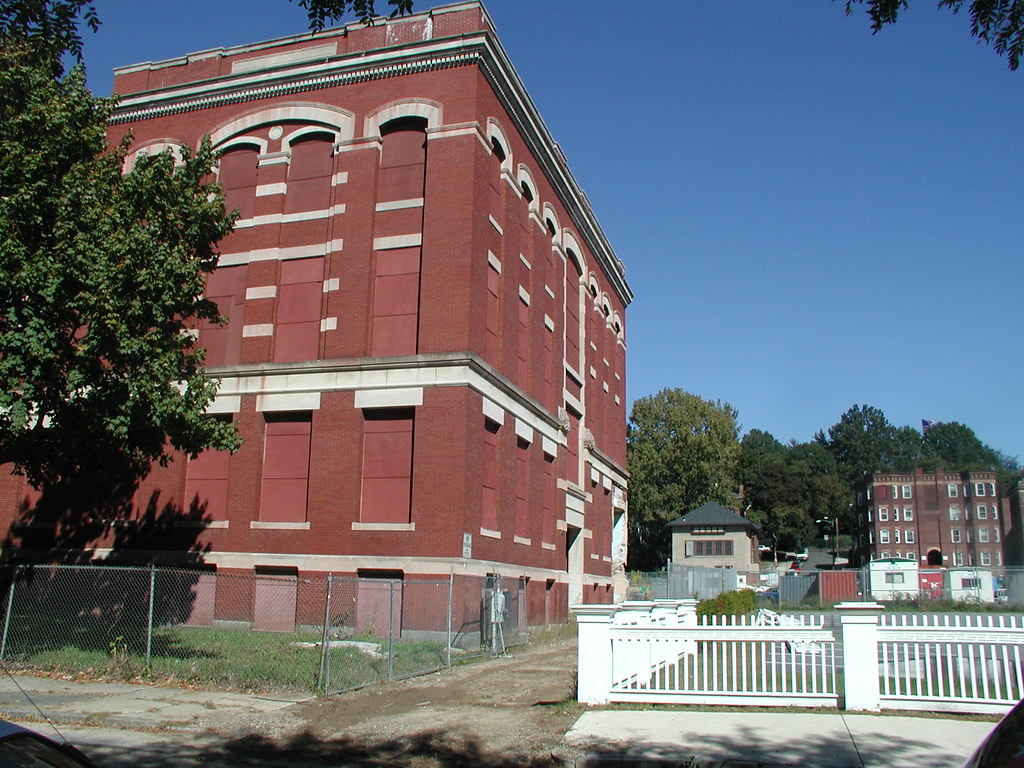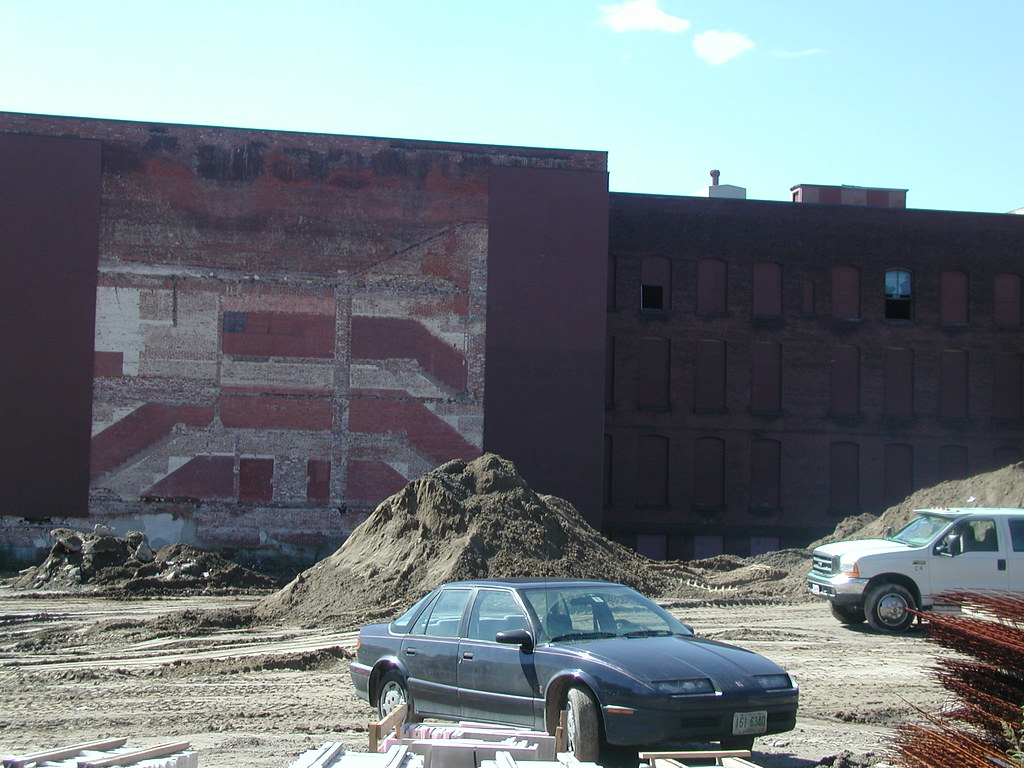
 Springfield resident Greg Metzidakis (pictured, far right, with fellow residents and coincidentally Historic Commissioners Marjorie Guess and Ralph Slate at last September’s Urban Land Institute reception) asked recently about the city’s former Technical High School on Elliot Street, which has been sitting vacant for some 20 years now, and was at one point the selected site for a new state data backup facility. City officials are still working on locating the facility at the site, although the options in Springfield had been narrowed down to Tech versus the STCC Technology Park’s Building 104.
Springfield resident Greg Metzidakis (pictured, far right, with fellow residents and coincidentally Historic Commissioners Marjorie Guess and Ralph Slate at last September’s Urban Land Institute reception) asked recently about the city’s former Technical High School on Elliot Street, which has been sitting vacant for some 20 years now, and was at one point the selected site for a new state data backup facility. City officials are still working on locating the facility at the site, although the options in Springfield had been narrowed down to Tech versus the STCC Technology Park’s Building 104.
Metzidakis emails:
The newspapers have been insisting that the Tech project is a renovation of the remaining section with no mention of any demolition whatsoever since it was chosen back in October. Several people have told me this too.
I was just wondering if this is one big misunderstanding where the reality is that demolition is going to happen in this data center proposal.
I also recall that in very late January of 2006, when it was announced that the state was first considering renovating Tech for the data center, it was estimated at a cost of $25 million or so. By October, when it was announced that Tech was going to be the site of this data center, it was in the $40 to $50 + million bracket. I was wondering what the state report really said, and which road will be taken for this project.
In a comment on a blog post last December about this subject, Springfield’s CDO David Panagore mentioned the removal of the entire building except the facade.
 Panagore’s words were, “The facade of Tech High is in the Historic District, and the state has taken the extraordinary step of preserving this facade while they remove the remainder of the building. This multi-million additional expense will incorporate green building principles and technology, thru a plenum air exchange system, far too expensive to build on its own, and only by having the existing wall (facade) in place does it become cost effective.”
Panagore’s words were, “The facade of Tech High is in the Historic District, and the state has taken the extraordinary step of preserving this facade while they remove the remainder of the building. This multi-million additional expense will incorporate green building principles and technology, thru a plenum air exchange system, far too expensive to build on its own, and only by having the existing wall (facade) in place does it become cost effective.”
This was the first I heard of such demolition. In a phone interview, Panagore talked about the green building practice of maintaining the facade with a bit of breathing space between it and the rest of the building, to enable its preservation, and I did not assume (perhaps foolishly) that this meant the rest of the building would be razed—perhaps because I am largely unfamiliar with the emerging practice employing the plenum air exchange system. When I think “preservation,” I do not also tend to think “demolition of all except the facade.” However, such an approach to preservation has become increasingly common, and it is still controversial, being coined for example “facademanship” and “facade-ectomy.” Architect David Schwarz was quoted in the New York Times, “The goal in facademanship is to preserve the spirt of the original building, and one of the tricks in facade preservation is never to let people know how little you have actually saved.”
As I responded to Panagore’s comment at the time, “In the media reports about this project, if it was ever mentioned that the remainder of Tech High would be removed in rehabbing the building for a [data center], I missed that detail. People dreaming about restoring the building to its former glory will surely be disappointed. Questions about the grave condition of the building, and its viability, and (now) the reasons for removing significant portions of it, seem to have gone largely unanswered or unaddressed so far.”
On the matter of public support for the project, Metzidakis said:
I believe that when these stories about the data center being located at Tech came out, it got a lot of support from most people for various reasons such as job creation, neighborhood beautification, and historic preservation of a significant building. A majority of the people who have endorsed/supported the data center proposal have mentioned that it would to be good to preserve and reuse a great historic building.

Regardless of all this, Metzidakis wanted to know if the state report—which, being dated September 29, 2006, is now possibly irrelevant, and new plans and proposals are undergoing other sorts of reviews and scrutinies—calls for such demolition.
The answer, for what it’s worth, is yes. From the report, at the bottom of page one:
The site plan for the 2.1-acre parcel is similar to the original study [done by Jung|Brannen in July 2006] and includes the preservation and reuse of the Elliot Street facade of the former high school and the demolition of the remainder of the high school.
At the time, the total estimated project cost to create the data center at Tech was just under $59 million. A couple of options were also presented that would reduce some of the estimated construction costs, bringing the potential total cost down somewhere around $57.5 million instead. The estimated cost for renovating the STCC Technology Park’s Building 104, also a potential site, was at the time $42.4 million.
This is surely outdated by now, and the numbers are of course undergoing active comparison with changes coming from the board that guides the STCC Technology Park (which, in what must be strange twists and turns in this saga, includes both David Panagore and Mayor Charles Ryan, who have been strongly vocal advocating that the data center be located at Tech).
Metzidakis responded to this news with sadness and a sense of being misled about the proposed renovation, or “historic preservation,” of former Tech High. From his email:
I am sorry to hear this and so will [be] some of the public. I have tried to get a tour of the building in recent years, like I was able to do back in 2000, but with Ryan’s administration it has been much, much harder for unknown reasons.
This historical commission seems much more reluctant to do anything about this, whereas before, previous members would have raised hell on this issue. Tapley School was in much worse shape than Tech, but a developer stepped in and renovated the 1887 building into nice condos, back in 1993, after the building nearly collapsed. The condos are still nice to this day.
I feel very misled and somewhat embarrassed because I wrote a very positive letter to the editor about this, which appeared in the newspaper on November 21, 2006. This was done along with almost ten other people who wrote positive letters of support, also expressing their hope to see the building redeveloped, not demolished. The public should seriously be aware of this also.
If this was the whole plan, why didn’t any officials get out and admit this fact to the public? We may now have to settle for pseudo-preservation.

The outdated report also includes a comparison table that is weighted heavily toward locating the data center at Tech:
| Comments | Tech High School | STCC Building 104 |
| New construction | No physical restrictions | Retro-fit obstalces |
| Owner-occupied | State-owned | Leased space |
| Single use building | Yes | Security concerns w/ multi-tenant building |
| Location meets T-3 security needs | Light vehicle traffic pattern | Active vehicle traffic pattern |
| Building meets T-3 security needs | YES—custom build | Many issues |
| Site configuration | Acceptable—no adjacencies | POOR—several adjacent buildings |
| Optimum building infrastructure | New custom building shell | 3rd generation use |
| Optimum site configuration | Square [optimum] | Rectangle [not optimum] |
| No water source above data center | YES | NO—”best practice” standards compromised |
| Building size (square feet) | 69,500 sq. ft.—right-sized | 116,000 sq. ft.—over-sized |
| Building construction costs | Estimated thru to TPC | Need study—subject to lease negotiation |
Last winter, Historic Commissioner Ralph Slate—who had toured Tech recently and provided devastating pictures to blogger Tom Devine of the interior—told me, “Historic preservation is often a labor of love. I think that a public-financed project is probably going to be the best use [for Tech], because the investment to bring the site up to date will be above the market value of the site. The public welfare benefits from investment in the Tech property, both to that neighborhood and to the city’s history, probably outweigh the cost savings the state would realize by using the STCC site. I think that even if the cost to renovate Tech is 20 to 30 percent higher, the money would still be well-spent.”
Are the benefits as salient when all that’s preserved is the facade, and the rest of the building is totally replaced? Supporters of this project in the surrounding neighborhood—and elsewhere in the city—may not think so. Then again, do we want to leave Tech vacant for any moment longer? What viable projects exist out there for this site, if not the data center?


